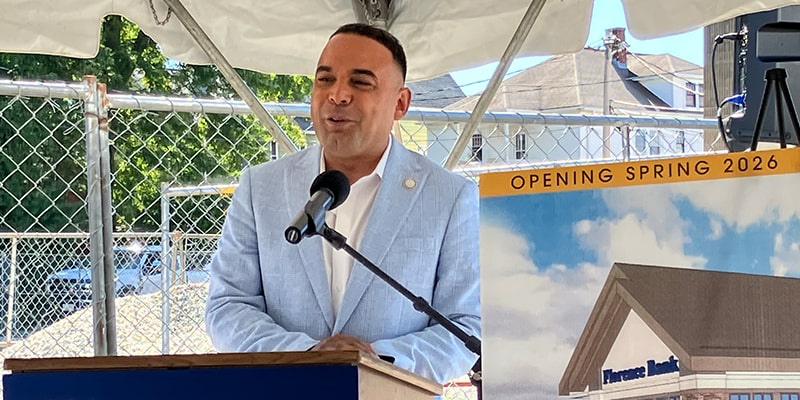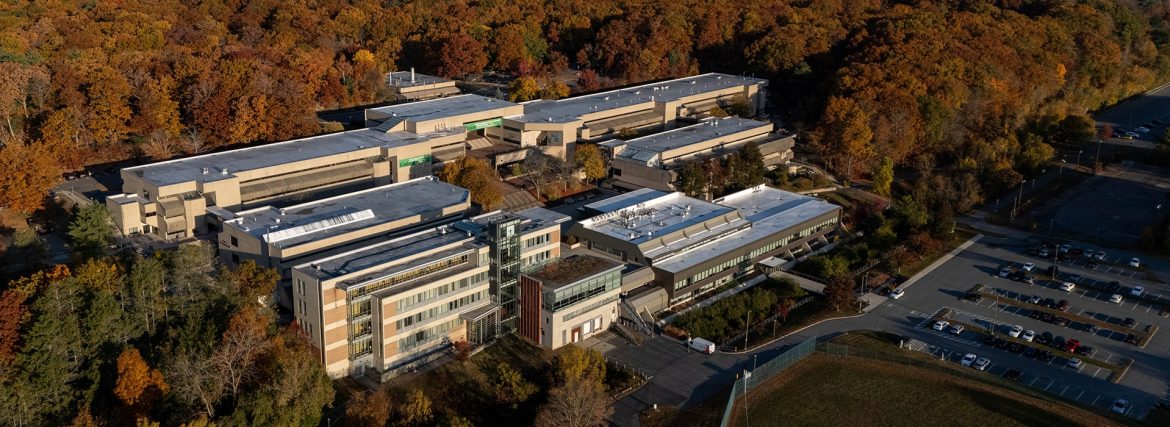America’s Paper City Is Writing a Clean Energy Future
Leveraging Century-Old Hydroelectric Infrastructure and Cultural Vitality to Attract Cutting-Edge Manufacturers and Transform Perceptions.
Nestled between the Connecticut River and the Mount Tom Range, Holyoke offers visitors and residents an unexpected combination of urban vitality and natural resources. The city of approximately 38,000 holds a distinction few Americans know: it has the largest per capita Puerto Rican population of any city in the United States outside Puerto Rico itself, at 44.7%. This cultural richness shapes everything from the restaurant scene to public celebrations, creating what locals increasingly call “Lil San Juan.”
“What makes us special is this diversity,” says Aaron Vega, Director of Planning and Economic Development for the City of Holyoke. “That comes across particularly in our restaurants, authentic Latino cuisine, both Puerto Rican, Dominican, and Colombian restaurants, but also a resurgence in other restaurants and bars that have come online.” In November 2024, the Massachusetts Cultural Council designated Holyoke’s Main Street corridor as a Puerto Rican Cultural District, making it only the second such district in the nation after Chicago.
The designation recognizes decades of community building. Vega points to the Armour Yard activation as a prime example, where partners from Beyond Walls have created a placemaking destination with beer gardens, food trucks, and vibrant murals. “The most recent mural that was finished there was of Hector Lavoe and Bad Bunny, two iconic Puerto Rican musicians,” he notes.
Beyond the cultural attractions, Holyoke maintains extensive parkland and hiking trails throughout the Mount Tom range, with two reservoirs offering additional recreational opportunities for a city better known for its industrial heritage than its natural amenities.
A Post-Pandemic Downtown Retail Renaissance
Recently, Holyoke’s downtown has welcomed a wave of new businesses at the very popular Holyoke Mall at Ingleside that include Monsoon Bistro, Shaft Current Solutions, YJ Catering, Teo Contemporary Eatery, Glass America, Urban Coworks, and Casa de Pollo and Pickleball Kingdom represent just a portion of recent openings. The mall continues to be a very strong partner for the city and the mall’s success signals the growth Holyoke is continuing to enjoy.
“There’s a combination of reasons why a business would want to move into our community, whether it’s accessibility, affordability, depending on the business, low costs of acquisition,” Mayor Joshua A. Garcia explains. “A lot of these businesses, particularly in the downtown area, like Paper City Fabrics, Paper City Clothing, Bomba De Aqui, Train 43 and Camila’s Cafe are all examples of new businesses in our vibrant downtown area.”

“You’ve got a lot of folks where Holyoke is kind of a brand in and of itself, and there are people that want to be part of that brand and part of that movement.”
Vega highlights how post-COVID recovery has accelerated this trend. “People want to gather again. People want to go to restaurants,” he says, noting that Western Massachusetts residents have traditionally supported locally owned businesses. The return of Comfort Bagel to Holyoke after a two-year absence generated particular excitement. Gateway City Arts, now owned by Lighthouse School, continues operating its 500-seat concert venue, bringing crowds back together for live performances.
The story of Cornucopia, a health food store that relocated from Northampton, illustrates the counterintuitive draw. Despite warnings from other communities about moving to Holyoke, the owners chose the city deliberately. “The more people told them they shouldn’t go to Holyoke, the more they wanted to come,” Vega recalls. “If part of your mission to start a business is to be part of something different, to be part of a rebirth of a city, there’s something different that we offer.”
Housing Development for All Income Levels
Housing development has become inseparable from economic growth in Holyoke, a connection the city recognized early. “For a long time, there was a division in municipalities where this office does housing, this office does economic development,” Vega says. “We realized early on that they’re intimately connected.” Two major projects now address different segments of the market, filling critical gaps in the city’s housing stock.
The WinnDevelopment Project enters its final construction phase, with 86 units for residents 55 and over scheduled for occupancy in September. The project offers housing at various income levels, including units for those earning 60% to 80% of area median income. “That’s a real plus for us to have some less restricted income apartments available for rent,” Vega notes. Across town, Open Square secured nearly $2 million through the state’s Housing Development Incentive Program, one of the few funding sources for market-rate housing. Construction on 88 market-rate units begins this fall.
The market-rate component addresses a specific need. Mayor Garcia explains the challenge facing gateway cities: “Leadership before us for decades has done a very good job partnering with the Commonwealth and taking care of our most vulnerable populations. What’s interesting is I don’t think we’ve ever really thought about what happens when people’s lives improve and circumstances improve.” With downtown’s four census tracts showing median household incomes below $27,000 annually, the city needed housing options for residents whose situations advance. “Maybe you’re a first year college student, or you’re making six figures working in one of these clean tech industries downtown,” Mayor Garcia says, emphasizing the importance of retaining residents as their prospects improve.
Leveraging Historic Assets and Addressing Challenges
Holyoke’s municipally-run gas and electric plant continues to drive clean tech interest. “Our municipal electric rates in the city of Holyoke are the lowest in the commonwealth,” Vega says. “For a lot of these tech companies that are big energy users, they are attracted to Holyoke just for that simple reason – they’re going to save lots of money.” At 16.55 cents per kilowatt hour, Holyoke’s residential rates run 39.60% below the Massachusetts average, powered by a system where over 65% comes from hydroelectric resources.
Sublime Systems is the sector’s crown jewel. The MIT-founded company selected 16 acres in the Flats neighborhood for its first commercial cement manufacturing facility, securing up to $87 million from the U.S. Department of Energy. The fossil-fuel-free operation is expected to be commissioned by 2026, creating 70 to 90 jobs while producing tens of thousands of tons annually of low-carbon cement. Other Green technology companies that call Holyoke home include Clean Crop technologies, Simple Pack and Xenocs, while many others are currently looking for locations in the city. The city approved a five-year tax increment financing package valued at over $351,000, complemented by $1,050,000 in state tax credits.
Mayor Garcia draws parallels to the city’s origins. “This canal system, they harnessed this hydro power from the Connecticut River creating cheap energy, keeping costs low,” he says. “It’s those very assets that we’re leveraging and trying to promote today to attract new industries, particularly those industries that are aligned with our own mission and green initiatives. It’s almost like history is repeating itself.”

Yet challenges persist. “Our challenge is that we don’t have a lot of site-ready places,” Vega acknowledges. Companies seeking turnkey facilities resist involvement in rehabilitation projects. “They don’t want to deal with the fire department and sprinkler systems. They want move-in-ready places,” he explains, identifying this as the primary obstacle slowing activity despite strong interest.
Infrastructure Investments
Infrastructure improvements include fundamental systems supporting manufacturing and daily life. “One of the other advantages that the city does have is the water and wastewater capacity,” Vega says. “We’re only using a little less than half of our capacity to take on wastewater and to provide water.” For manufacturers requiring substantial water resources, this available capacity provides a significant draw.
The city is tackling a $10.5 million combined sewer overflow project, continuing efforts to prevent untreated stormwater from reaching the Connecticut River. The wastewater system now stops around 70% of solid waste from bypassing the treatment plant during heavy rains, a marked improvement from previous performance. Vega also points to innovative approaches on the horizon: “We’re talking with companies about anaerobic digestion, utilizing our waste sewage to create energy. We’re really trying to look for those innovative opportunities when it comes to utilities and infrastructure.”
Mayor Garcia emphasizes visible improvements that residents experience daily. A $10 million federal grant through the Pipeline and Hazardous Materials Safety Administration will accelerate aging infrastructure replacement. The Center City Connector project brings a roundabout to the intersection of West Franklin and Beach Streets, while the High and Maple complete reconstruction project moves forward for a 2029-2030 completion.
“I think those three projects, if they happen quickly enough around the same time, might curve some of that perception issue,” Mayor Garcia says. “People will start seeing what’s deteriorated infrastructure or what some will describe as blight driving throughout downtown will have a whole new look and feel and how the community interconnects and that feeling of safety.”
Celebrating Diversity with The Puerto Rican Cultural District
The November 2024 designation of Holyoke’s Puerto Rican Cultural District marks formal recognition of what residents have built over decades. Spanning eight blocks along Main Street from Race Street to South Canal Street, the district showcases vibrant murals, colorful banners highlighting community heroes, and numerous Latino-owned restaurants serving authentic Puerto Rican fare. “Finally, reconciliation might not be the right word, but what we now look at as one of our assets, that diversity unfortunately was not seen that way in the late seventies through the eighties and nineties,” Vega reflects.
The timing of Puerto Rican migration created lasting misperceptions. “The Latino community came into Holyoke at the worst time. They came in the late seventies when businesses were starting to leave, housing was not being taken care of,” Vega explains. “In many ways, they get blamed for what happened in Holyoke, but actually they were the ones that came in at a time trying to save the city. They were the only ones living downtown. They’re the only ones still working in the factories that were still here.”

The Fiestas Patronales festival highlights the district’s growing influence. Now in its fourth year, the celebration attracted 20,000 people on a single Saturday in August 2025, matching what took four days to achieve in the first year. “That growth, that’s regional,” Vega notes. “People come up from New York. People actually come up from Puerto Rico for that.” The festival allows broader community participation. “People in the city are coming down and saying, ‘Now I get this. This is a celebratory culture. They like music, they like to dance, they love food.'”
Looking Ahead to the Tipping Point
Holyoke is at a pivotal moment where a few successful projects could fundamentally shift perceptions and investment patterns. “I think we’re getting very close,” Vega says. “Every day we hear from different developers and different people saying, ‘We read about Holyoke, we read the article in Commonwealth Magazine, we read the article in Business View, what’s going on over there?’ People come in still a little bit tepid, but I think there’s one or two more projects that are coming that will really open the doors up.”
Mayor Garcia balances project development with quality-of-life improvements residents can see immediately. “I am going to be focused on the things that people can see and feel,” he says, pointing to road conditions as a statewide concern requiring more aggressive local funding supplements beyond Chapter 90 allocations. “It’s going to require me to work together with the council on a much grander scale to be able to punch harder in how we invest these resources.”
Public safety initiatives include work by a new police chief who previously oversaw audit implementation in Springfield. “He went in there and really changed the culture, which then allowed him to maximize the capacity within that department to do more than what we were doing before,” Mayor Garcia explains. The approach addresses serious crimes and quality-of-life issues. “We’re trying to tackle these higher crime issues and then also take care of the little things that are not little things. They’re big things to people.”
The strategy integrates multiple city departments. “If I can get all these pieces to work together; the projects, the infrastructure, the departments with the residents and expectations, that’s really where we could start feeling a better quality of life for everybody,” Mayor Garcia concludes. With major housing projects breaking ground, Sublime Systems moving toward 2026 commissioning, and infrastructure improvements reshaping downtown, Holyoke’s transformation from its industrial past toward a clean energy future continues gaining momentum.
AT A GLANCE
Who: Holyoke, Massachusetts
What: A gateway city transforming from industrial decline to clean tech manufacturing hub.
Where: Hampden County, Western Massachusetts
Website: www.holyoke.org
PREFERRED VENDORS/PARTNERS
Holyoke Community College: www.hcc.edu
Holyoke Community College sits on 135 beautiful acres, and serves 7,000 credit and non-credit students annually. Approximately 800 students receive degrees each year. HCC is a place of transformative learning. We provide support services that break barriers so students can succeed in college. At HCC, our students learn, engage, and connect. They benefit from networks leading to new careers in the workforce and pathways leading to prestigious four-year colleges and universities.
Winn Development: www.winncompanies.com
WinnCompanies is an award-winning owner, developer, and manager of high-impact, quality apartment homes, supported by 4,300 team members in 28 states, the District of Columbia, and Puerto Rico. The company operates the nation’s largest portfolio of affordable housing, and it is a leading manager of mixed-income, workforce, and privatized military housing.
Hazen Paper: www.hazen.com
Hazen Paper, founded in 1925, in the last 25 years has evolved from a paper company to a recognized world leader in holographic origination and optical technology. Hazen holographic products are used to enhance and amplify brand image and to authenticate products like the Basketball Hall of Fame Yearbook




